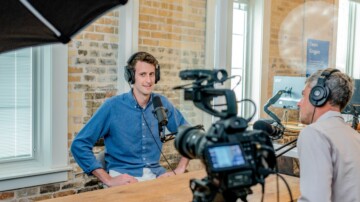Acquisition Trends and New Donor Stewardship

How hard has it become to find new donors? Very difficult, especially finding those donors that will return year over year. And it’s getting even harder!
Direct mail acquisition rates have been declining for years in many industries. The online channel has helped but the retention rate of online donors is lower (at least until we find ways to better engage them).
And as if this weren’t bad enough, retention rates of newly acquired donors have been declining in almost every industry. And it wasn’t great to begin with! 10 years ago, the average retention rate of a newly acquired donor was around 33%. Today it is 27%, and in some industries, even lower. That translates into a loss of 3 out of every 4 newly acquired donors
I sometimes use the analogy that donors should be considered assets much like a nonprofit’s endowment. And if the CFO told his board members each year that he had lost 75% of their newly purchased stocks, and asked for money to re-purchase them, he wouldn’t be long for his job. But in essence, that is what fundraisers do each year – buy the donors to replace the ones they lost from the prior year.
So how do we get out of this cycle? After all, nonprofits need resources to accomplish their mission and can’t just watch their donor file shrink. Well, there are a number of steps that fundraisers should take.
First, they should acquire donors that are likely to continue donating. Acquisition should be judged on the multi-year return of new donors. That is, if list A has the best initial response rate but list B has the better return over 2 or 3 years, then list B should be considered the better acquisition source. The same is true when deciding between channels.
Learning how to separate the donors that care deeply about your mission from those that are “one and done” is not an easy task. Understanding a donor’s motivation to give can help yield better strategies. Developing a plan of action to retain and engage donors is where the challenge lies.
I fully understand that fundraisers will respond that, too often, they need the money this year, not next. But this approach is just too short-sighted. Some organizations have started to address this problem by allocating a small percentage of acquisition dollars to prospects that will pay off less this year but more in future years. Over time, these donors will improve retention rates and lessen the need for as many new donors.
Second, devote time to your existing donors with the expectation that this will pay off in future years. For example, Fundraiser Penelope Burk showed* that a thank you call to a newly acquired donor yields 40% more revenue in year 2. Such thank you calls cost less than $1/call using a professional telemarketer and even less if volunteers or staff are used. The ROI is significant but does require an organization to spend money this year with the expectation that they get much more next year. As an industry, we need to get better at testing and making these types of multi-year investments.
And lastly, discover who your worthy donors might be. The Target Analytics nonprofit cooperative database compiles giving behavior from hundreds of participating organizations and billions of donations. This database is used to assess your organization against all other organizations your donor supports. The results are then refined into one of seven actionable, behavioral groupings called “Loyalty Insights,” providing you a clear understanding of which donors have the strongest affinity to your cause. A report is generated that highlights their level of support specific to your organization compared against all the others, enabling you to easily determine how to develop your ongoing engagement strategies.
In addition, research financial capacity and solicit the wealthier donors. Or you could measure their passion by using the rich interactions that CRM systems have been tracking for years but that most organizations are rarely using. For example, look into donors who answered a survey, had their employer match a gift, read your newsletter, liked you on Facebook, attended a recent event, or said something nice about you while chatting on that thank you call! Remember, donors aren’t trying to hide their passion for your organization. If you take the time to notice, you may find that you’re retaining more of your current donors and buying fewer new ones!
* Donor Centered Fundraising by Penelope Burk



